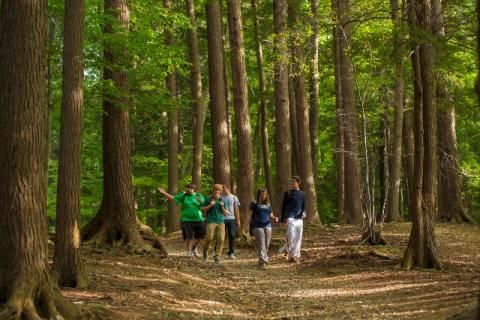The first public discussion of a $48,000 study of the trail system in Wintergreen Gorge, a wooded area on and adjacent to the campus of Penn State Erie, The Behrend College, will be held Wednesday, Nov. 20, in the college’s Reed Auditorium. Anyone with interest in the gorge – an area favored by local hikers, trail runners and mountain bikers – is encouraged to attend the meeting, which will begin at 6:30 p.m.
The Pennsylvania Department of Conservation and Natural Resources paid for the trail study, which focused on an area just south of the Penn State Behrend science complex. A trail there leads up to a 250-foot overlook.
“It’s a really scenic vista – one of the best I’ve seen in our region,” said Mike Naber, lecturer in geosciences at Penn State Behrend. He and Ann Quinn, a lecturer in biology, secured the DCNR grant.
When it rains, water ponds on portions of the trail. People walk and ride around it, damaging the ground cover alongside the trail. That makes the erosion even worse.
“It’s not necessarily anybody’s fault,” Naber said. “It’s just time taking its toll. But we have to do a better job of working with the contours of the surrounding area, leaving as much of the vegetation as we can in place.”
The primary gorge trail already was cut when Mary Behrend donated her 400-acre property to Penn State in 1948. The Behrends rode their horses there; they had even poured concrete in places, making level pads for picnic tables.
In the years that followed, the college used the trail as a primitive fire road. Today, it feeds a network of smaller hiking and biking trails, many of which descend to Four Mile Creek.
The college used the DCNR money to hire Pashek Associates, a Pittsburgh-based landscape architecture firm. The company was asked to design a more stable – and, in places, handicap-accessible – trail structure. Their model, which will be discussed at the Nov. 20 meeting, will include switchbacks, rain gardens and a crushed-limestone trail base.
Only one option was ruled out from the start, said Naber, an avid mountain biker. “Our goal is not to reduce use, or to restrict access,” he said. “We want to preserve the trail, and the gorge, so more people can use it for a longer time.”
